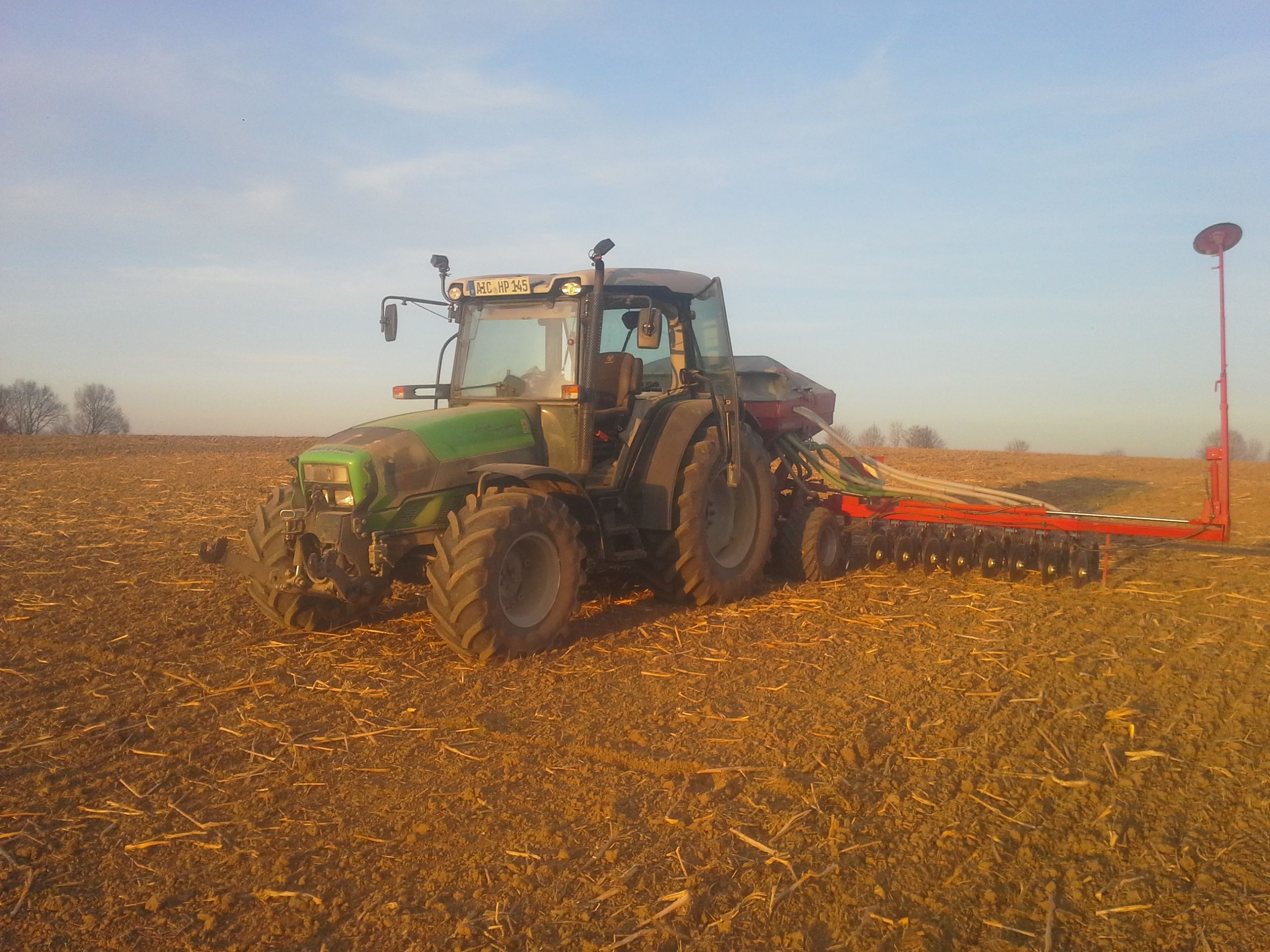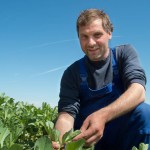Farm description
The Bioland farm Kreppold lies 500 m above sea level and has, with an average annual temperature of 7,5⁰C a mean annual rainfall of 750 mm. On his around 120 ha of sandy to loamy soils, he cultivates legumes (36 ha), cereals (42 ha), field vegetables (3 ha), green manure/grassland (35 ha) and forest (7 ha). Together with the suckler cows (40 GV), he operates a mixed farming system.

Climate friendly practices applied
- Improved on-farm nutrient management
Composting of on-farm residues
Johannes Kreppold started composting farmyard manure from his 40 suckler cows. Additionally, since 2015, he experiments with an innovative anaerobic treatment (Microbial Carbonisation). He spreads the material on some cultures (maize, winter wheat, beetroots) and thus helps to close on-farm nutrient cycles.
Composting farmyard manure helps to reduce CH4 and N2O emissions, compared to the emissions of a farmyard manure pile. Additionally, fertilizer application can be reduced in the following years.

Johannes Kreppold, Bioland farm Kreppold, Wilpersberg
Climate change mitigation and adaptation is the essential topic of our time and organic farming plays a forerunner role. Through participating in the SOLMACC-Project and the results thereof I want to gain a feeling for the right balance between reasonable yields and C-sequestration. The results of the project shall be used on my farm for possible improvement.
- Optimised crop rotations with legumes
Introduction of grain legume mixtures and maintenance of existing forage legumes
Johannes Kreppold changed parts of his crop rotation management. He increased the grain legume production (soya bean and field beans) from 0% to more than 21% of the arable area. Together with the forage legume production, 38% of arable land is cultivated with leguminous crops.
Leguminous crops contribute to N fixation and therefore reduce the amount of fertilizers needed in the following years.
- Optimised tillage systems
Reduced tillage and undersown crops
Johannes Kreppold reduced the depth of tillage from 15-20 cm to 10-15 cm for nearly all of his arable crops (except winter wheat). To reduce the depth of tillage on his farm, he constructed special machinery, adapted to his local soil conditions. Therefore, he could minimize weed pressure and maintain crop yields as before.
Reducing the depth of tillage helps to reduce fossil fuel consumption.
- Agroforestry
Use of forest woody biomass and hedgerows along agricultural fields
The farm installed boundary hedges (around 1 ha in total) along their agricultural fields. Additionally, 7 ha forest are cultivated. Some of the extracted wood is used for household heating to substitute fossil fuel house heating. Some of the pruning material is used for the MC treatment (see above).
Together, the trees and hedges lead to C sequestration in above- and below-ground biomass and in soil. The energetic use of wood chips replaces fossil fuel consumption.
Location
Other farms